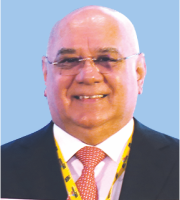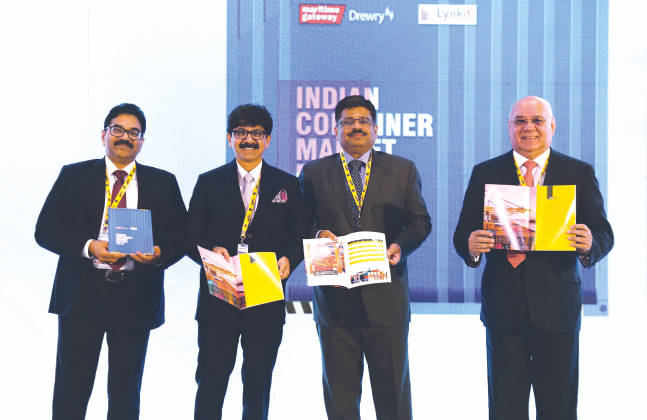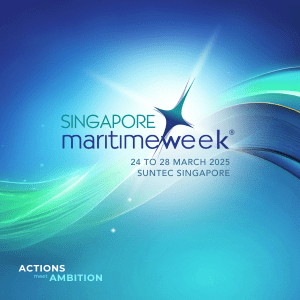The tone for day-long deliberations was set at the inaugural session where industry leaders gave a clarion call to drive efficiencies using technology, make the distribution machinery efficient and put the customer in the first place in order to make our supply chains right
Making a welcome departure from the policy and infrastructure related issues that have been discussed in the past editions of Containers India, this year the mega summit brought the most controversial issue onto the center stage – “the cost of logistics.” Elaborating more on the topic Ramprasad, Editor-in-Chief and Publisher, Maritime Gateway said, “When we started Containers India we were discussing several policy related issues such as Cabotage, need for more container terminals, movement of cargo – whether it is more towards the east side?, the mushrooming of CFSs – will it help the trade?, DPD and several issues. So when I look back at the transition that is happening in the discussions, this year’s topic in consultation with CSLA and other stakeholders, we finally arrived at the most important thing which even the government is discussing – the cost of logistics.” The first session focused on “Reducing cost – are we looking at the wrong tree?,” which essentially means that in our value chain every stakeholder is a service provider for other stakeholder and when it comes to the cost everybody says the other person is responsible for making logistics very costly, so the first session tried to demystify where the cost is actually getting escalated?
The second session was “Empowering the end customer,” how the industry is serving him and what kind of transparency service providers are providing? The third session discussed digitalisation. For the past couple of years digitalisation has been at the forefront in our sector. Several organisations are independently making efforts to bring digitalisation as an enabler for customer service.
To set the tone for the upcoming sessions, Ramprasad shared few glimpses from the Containers India Report. Indian container market is witnessing incremental double digit market growth Y-o-Y with several policy reforms in place. Increasing transshipment volumes at Indian ports, DPD, DPE, more enthusiastic enrolment as AEOs, PCS, adoption of digitalisation and automation of cargo movement at ports are some of the key developments that aided the upward movement in Indian container trade.
In FY 2018-19, the total throughput at Indian container terminals was 16.99 million teus with Y-o-Y growth of 10.5 per cent and in the same year total installed capacity was 28.65 million teus. Capacity utilisation of all the container terminals put together stood at 60 per cent and out of this west coast ports handled about 72 per cent of total volumes, whereas eastern ports handled the remaining 28 per cent. So the container throughput grew by 11.4 per cent in 2018. If you look at the past four years, the average growth has been 12 per cent. Major ports have been continuously loosing significant share of container trade to private ports in the last decade. The market share of private ports has increased by more than 5 times in the last 14 years. The market share of major ports has declined from 92 per cent in 2005 to 58 per cent by 2018, whereas the market share of private ports collectively rose to 42 per cent in 2018 from a paltry 8 per cent in 2005.
Krishnapatnam and Kattupalli Ports on the east coast have amassed significant volumes in the last 4-5 years and are adding to the growth story of private ports which was earlier done by Mundra and Pipavav Ports. The terminals at JNPT registered a healthy growth of 8 per cent in 2018 which is the highest Y-o-Y growth in the last 4 years. But nevertheless its share has been reduced to more than half in the last 15 years. Mundra is rapidly approaching to become the largest shareholder in total container traffic handled with 11 per cent more boxes handled in 2018 over the previous year.
Ports on the west coast will continue to dominate in total container throughput and in the container infrastructure. Currently about 72 per cent of container throughput is handled by the west coast ports. As he concluded, Ramprasad invited

Adarsh Hegde, JMD, Allcargo Logistics to deliver his welcome address. “As we started off in the morning saying that many people are stuck enroute and thus is the infrastructure of our country. That needs to be changed and its changing for good for sure,” remarked Adarsh. As the topic says – “Inland logistics – Streamlining the container supply chain,” the stats shared by Ramprasad give us a lot of insights that things are not as bad as presumed. But the fact remains – well it’s a year with some rough ride, but there is one thing about this industry which I strongly believe – we go through these tough times despite all hurdles and we have demonstrated high resilience and creativity through which we emerged stronger. The recent trade slowdown has impacted Indian container trade, but the average still hoovers around 12 per cent. Q2, 2019 results shared by the biggest liners reveal their imports grew by 2 per cent while exports were flat. Last year during the same period it was 8 and 9 per cent respectively. Indian economy has plunged to a 25 quarter low to 5 per cent in April-June quarter. The government has slashed corporate tax from 22 per cent to 13 per cent.
Coming to how we can streamline the container supply chain? We need to see the entire value chain starting from exim to transportation and storage which are mostly infrastructure related. The second part is sustaining it using technology and skilled manpower. Some of the important elements that need to be included in the policy would be – creating a national logistics e-market place, simplification of documentation, transparency through digitalisation of processes in Customs, PGAs in regulatory processes and compliance services, optimise the modal mix to drive first and last mile connectivity. There is need to increase the warehousing and storage infrastructure quality including specialised warehouses. Existing ICDs and CFSs need to be utilised optimally before investing in new infrastructure. “I strongly believe, today is the business of efficient logistics as distribution machinery dictates cost to market, reach and time to market.” A lot of technologies are in place such as automatic identification and data capture (AIDC), RFID, modern warehousing management systems that will drive the efficiencies and make our industry more competitive. Adarsh Hegde concluded by detailing on the growth and expansion plans of Allcargo Logistics.

As Capt. Deepak Tewari, Chairman, CSLA, took onto the stage he complemented on the theme of the event – “Streamlining the container supply chain,” which he said would be valid for the next 5 years or even a decade if we take it in its broader sense. CSLA has been a partner in planning the conference, “the sessions have been given a customer focus and this will be the way for all the seminars that will be planned in India henceforth. “Put the customer first and only then can we get our supply chain right,” pointed out Capt. Tewari. CSLA has been a strategic partner with Maritime Gateway for the past 7 years and in the coming years the topics of future conferences will revolve around sustainability and green supply chain, he said. As he concluded the welcome address he encouraged the gathering to be more participative and make the best out of the sessions. Following the welcome remarks the Containers India 2019 Report was released.








